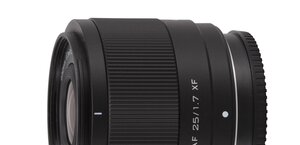Nikon Nikkor Z 14-30 mm f/4 S
4. Image resolution
Let's see how the Nikkor Zá14-30ámm f/4áS compares; its results, reached in the frame centre and at 14, 22, andá30ámm, presents a drawing shown below.
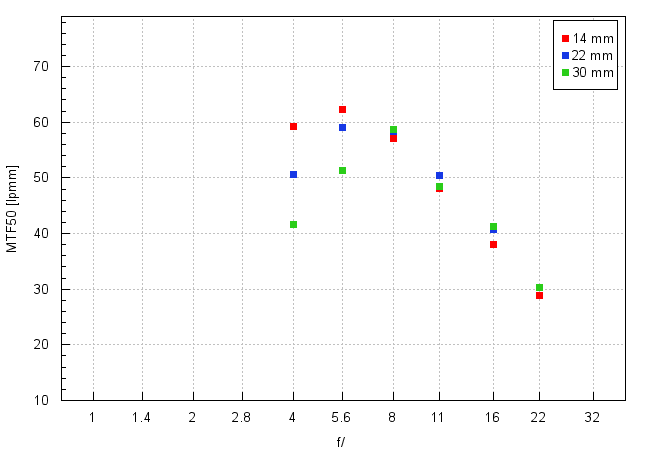
Please Support UsIf you enjoy our reviews and articles, and you want us to continue our work please, support our website by donating through PayPal. The funds are going to be used for paying our editorial team, renting servers, and equipping our testing studio; only that way we will be able to continue providing you interesting content for free. |
- - - - - - - - - - - - - - - - - - - - - - - - - - - - - - - - - - - - - - - - - - - - - - - -
When it comes to zoom lenses as fast as f/4.0 or slower it's always worth reminding that such devices simply cannot break any resolution records. By f/4.0 the optics is still plagued by optical aberrations – in fact their influence might be visible even by f/5.6. If the lens is constructed in the right way you can expect it to be almost completely free of optical aberrations only by f/8.0. It means you should compare its performance to that of the best system primes but only stopped down to f/8.0. In the case of Nikon Z7-based tests MTF50 function values at that point reach about 65 lpmm.
Looking at the test results from that perspective the performance at the shortest focal length should be assessed very high. It's a piece of good news because it is also one of the most important focal lengths in this type of instrument. It's clear that images of very good quality can be shot up from the maximum relative aperture and on stopping down the lens to f/5.6 you are able to exceed a level of 60 lpmm distinctly.
It would be difficult to have any reservations concerning the performance of the Nikkor in the middle of the focal spectrum. Already at the maximum relative aperture MTFs reach a good level of over 50 lpmm and on stopping down the aperture they come close to 60 lpmm.
If you want to find any weaknesses then you should examine the 30 mm focal length. By f/4.0 the MTFs get only to the borderline of the decency level. Fortunately stopping down improves the performance very fast and once again you are able to reach results close to 60 lpmm. The frame centre doesn't give you any reason to worry and it makes us very pleased because the task of optics constructors was in this case difficult indeed. What about the edge of the APS-C/DX sensor? Let's find out!
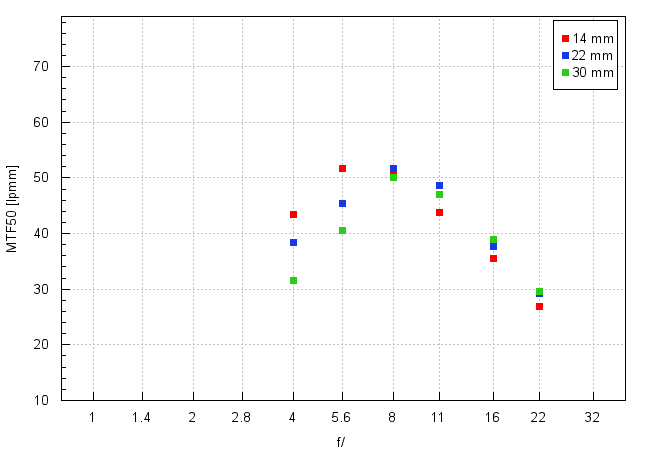
Once again the best performance belongs to the shortest focal length – you can enjoy images of sensible quality even at the maximum relative aperture. Some problems can be found at the longer end of the focal spectrum. At 22 mm the situation is perhaps still quite good, because a slight stopping down to, say, f/4.5 makes unwanted blurry areas disappear. Bigger problems you might experience at the maximum focal length where, by f/4.0, image quality is so weak that even stopping down the lens to f/5.6 doesn't allow you to exceed the decency level.
Let's raise the bar and check how the tested lens manages to perform on the edge of full frame – appropriate graph can be found below.
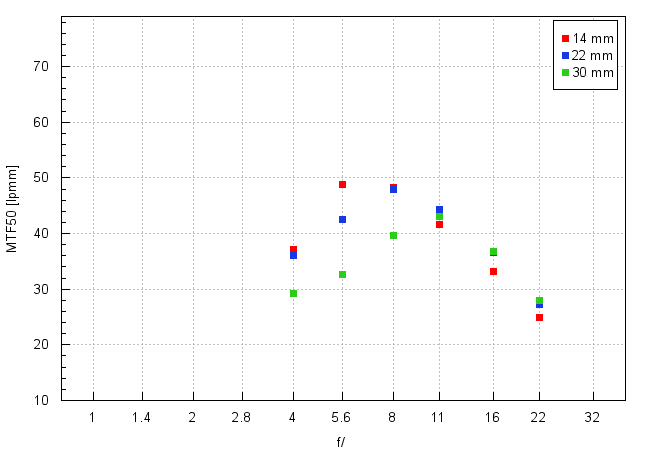
Once again the best performance you observe at 14 mm although, in this case, you have to close down the lens a bit in order to guarantee a sensible image quality. By f/5.6 you deal with a quite good result, reaching almost 50 lpmm. Here the Nikkor constructors took the proper care of the lens: using f/5.6 – f/11.0 apertures, typical for landscape photography, you are able to get images of good quality practically across the frame, making the most if such a wide angle of view. That's what it's all about.
Similar things can be said about the middle of the focal range. It fares a tad weaker than the 14 mm focal length but, after employing apertures from f/5.6 to f/11.0, you also can enjoy images of sensible quality across the frame.
It seems the 30 mm focal length is the weakest point of the tested lens. Honestly, were I to choose the weakest point of such a lens I would pick the maximum focal length as well. The only solace is the fact that by f/11 you are able to produce sharp images across the frame. Still, you should remember the 30 mm focal length is a kind of a bonus here - after all 12-24 or 14-24 mm instruments don't feature it. In the 14-24 mm range the tested Nikkor fares very well so, I suppose, it is the best summary this chapter could get.
At the end, traditionally, we present crops taken from photos of our resolution testing chart which were saved as JPEG files along the RAW files, used for the analysis above.
| Nikon Z7, JPEG, 14ámm, f/5.6 |
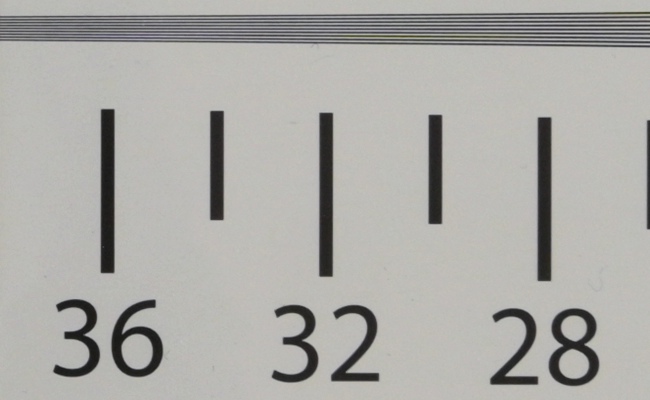 |
| Nikon Z7, JPEG, 30ámm, f/4.0 |
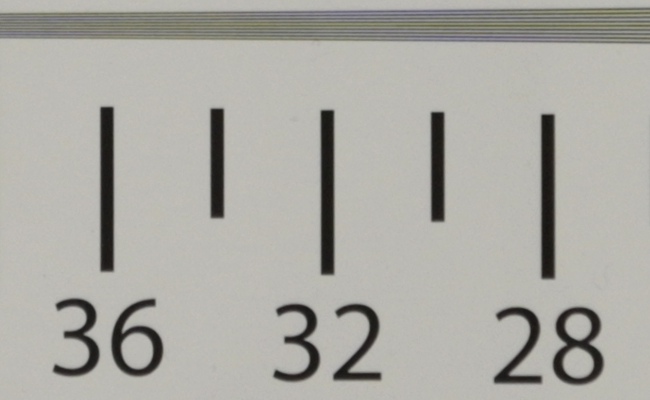 |






